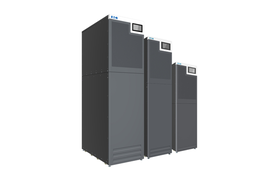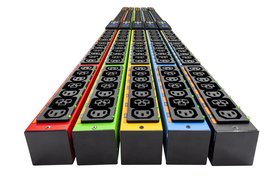As the world adapts to the digital transformation of almost every aspect of everyday life, the data center sector, which plays such a pivotal role in digitalization, is constantly evolving.
The rapid evolution of data center markets and shifts in the architecture and design of data centers means that as we start a new year, the data center industry is navigating a complex maze of challenges and opportunities that promise to realign its trajectory.
In fact, it is probably true to say that the data center industry is undergoing its own transformative journey, one which involves leveraging cutting-edge technologies to optimize operations, streamline resource allocation, and enhance security protocols.
From improving sustainability and energy efficiency while simultaneously managing rapid growth in demand – effectively doing more with less, to complying with regulatory changes, it is fair to say that events in 2024 will be far from ‘business as usual’ in the data center sector.
Factors impacting growth
Several factors are impacting the growth of the data center market. These include the continuous development of data-intensive industries, accelerated by the widespread continuous adoption of the cloud by organizations across the globe. Innovative new Internet of Things (IoT) and Artificial Intelligence (AI) technologies are another significant factor.
AI and other digital solutions have an increasingly important role to play in data center lifecycle management. Not only do such capabilities monitor the current state of the data center, they also provide deep operational insights and perform predictive analysis too, allowing data center operators to manage performance, as well as understand where their assets need to be, and build the path they need to get there.
But these capabilities also represent a challenge. Much AI software is trained on vast quantities of data, so the emergence of technologies like AI has led to an enormous surge in computing demand.
According to TIRIAS Research, the data demands of generative AI applications such as ChatGPT could result in a 50x increase in the number of workloads processed worldwide by 2028.
Such exponential growth in demand, along with ongoing advancements in technology, could see a change in customer requirements around data center design and architecture. This, in turn, may result in the need for new and different solutions.
At the very least, data center operators will face an urgent need for more data center space and increased density per rack as they maximize or expand their existing investments. They will need to find means of meeting that increased power demand that can be deployed quickly and managed effectively.
To boost availability fast, prefabrication is already emerging as one of the answers to the challenge. A modular data center is a portable method of deploying data center capacity that can be placed anywhere it is needed, so expect to see this trend accelerate in 2024. Modular data centers typically consist of standardized components that can be added, integrated, or retrofitted into an existing data center or combined into a system of modules.
Power constraints
In many countries there are now restrictions on adding major new loads to the grid. Permission to build or expand is becoming more difficult to obtain, prompting questions over where data center clusters are located.
Until now, the conventional hubs for data centers have been major cities like Frankfurt, London, Amsterdam, Paris, and Dublin. This is due either to the presence of company headquarters or the natural economic advantages stemming from robust telecom connectivity and ideal client demographics.
However, there is a shifting trend towards moving away from these traditional hubs and establishing data centers in smaller cities across Tier II countries where power constraint may be less of a problem and relevant permits easier to obtain.
The drawback of this, of course, is the potential lack of skilled workers. Nevertheless, expect to see this trend develop in 2024 as cities less well-known for data center clusters, such as Warsaw, Vienna, Istanbul, Nairobi, Lagos, and Dubai appear on the radar to avoid power constraints.
Sustainability challenge
With data centers being central to almost everything we do, public awareness of their presence and power requirements is inevitable and, with this, comes environmental responsibility. Data centers are the backbone of the digital world and therefore impact how society reduces emissions to combat climate change.
In 2024, achieving sustainability goals will continue to be vital, and the data center industry will bear scrutiny from regulators such as the European Union (EU) and US Security and Exchange Commission to ensure it makes progress.
Balancing growth and sustainability will undoubtedly be challenging, but as the industry steers toward a more sustainable future, data centers will need to adopt innovative strategies to minimize their overall environmental footprint.
This imperative aligns with a broader industry-wide commitment to a more holistic approach to system performance which recognizes the interplay between technological advancements and environmental impact. Energy efficiency will play a significant role.
Achieving more, with the same amount of energy or less, will be a recurrent theme throughout the year ahead that will continue into the foreseeable future.
There will be growing emphasis on addressing what are known as 'Scope 3 emissions' under the Greenhouse Gas Protocol, the most common standard for carbon accounting.
Currently, much of the market is focused on Scope 1 and 2 responsibilities, which include carbon usage effectiveness, power usage efficiency, water usage efficiency, amongst others.
Scope 3, however, involves looking at a data center from a total life-cycle perspective in terms of sustainability, shifting the emphasis from metrics to entire system performance.
Digital will be the key method for measuring and managing this performance, using software that takes account of aspects such as availability, scalability, flexibility, and commercial efficiency for the most thorough and detailed sustainability reporting.
Significantly, this heightened awareness is propelling the sector towards adopting eco-friendly practices. Expect to see diesel generator replacements, battery energy storage systems, on-site generation, advanced cooling, and other technologies taking center stage.
Seeking out renewable energy sources to replace or bolster existing supplies and exploring the options to introduce or increase on-site power generation from assets such as solar panels and wind-turbines, will be part of this.
So, too, will be a renewed emphasis on how data centers can work in tandem with the grid. We are all likely to continue to hear more about the grid interactive data center in 2024 and data center operators will doubtless want to find out more about this option which brings with it the benefit of not only helping to decarbonize the grid but also contributes to their own sustainability goals.
Regulatory pressure
Unsurprisingly, the data center industry has attracted the attention of the regulatory bodies charged with delivering the United Nations goal of carbon neutrality by 2050. In Europe, the EU is leading the way, rapidly reframing the conversation around data centers via a root and branch review of some of its core directives including the recast Energy Efficiency Directive.
The revised directive, published in September 2023, introduces an obligation for EU Member States to monitor the energy performance of data centers, and states that an EU-level database will collect and publish information relating to the energy performance and water footprint of data centers, making this far more than a cosmetic exercise.
In fact, the European Commission has ordered a study on the energy performance and sustainability of data centers meaning that the data center industry should be ready for policymakers and regulators to take a much tougher stance on environmental integrity.
The message to the industry must be that it is better to act now, in anticipation of tighter rules, than respond later. Taking responsibility into its own hands will serve the industry well, certainly in reputational terms and probably financially, too, because reduced energy and water use is likely to save money in the long term even when the costs of improvements are factored in.
A bright future
Building a robust digital strategy may seem daunting, but in today's landscape it is an absolute necessity for data centers to evolve in line with all the trends touched upon in this article. With increased demand for computing driving the need for speed and optimization of operations, it is key to ensure that the data-rich environment is managed efficiently.
Digital transformation is affecting every sphere of life, and the way we do business is changing. Clearly, digitalization is good for the data center industry and AI can help the industry to become more predictive, rather than simply reactive.
The future looks bright for the data center sector in 2024. Certainly, it will be characterized by a dynamic interplay of technological advancements, sustainability imperatives, and a relentless pursuit of operational excellence. Data centers have the scope to grow responsibly and sustainably to become true hubs of digital innovation – a worthwhile new trajectory for the industry and for us all.
More from Eaton
-

Sponsored With power comes responsibility
Changes in data center needs have fueled a convergence in management software
-

Sponsored Eaton launches a new compact UPS to match your every need
Intelligent power management company Eaton announces the launch of a new uninterrupted power supply (UPS) – the Eaton 93T UPS
-

Sponsored Eaton launches its new Rack PDU G4
Boosting efficiency, security, density and flexibility to meet today's data center priorities

